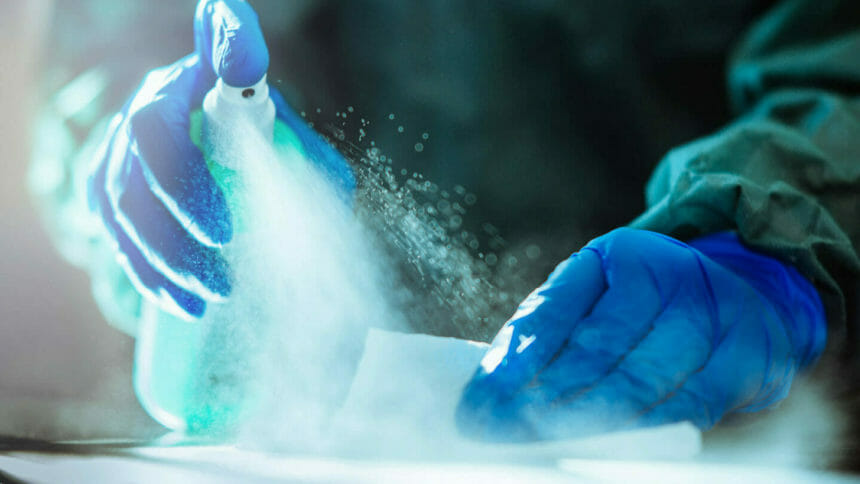
Researchers say they’ve found the first verifiable evidence that the presence of SARS-CoV-2 on hands and surfaces significantly contributes to the spread of COVID-19. The results suggest common sense actions to prevent transmission, investigators say.
The study followed 414 close contacts living in the same London households as residents who were infected with SARS-CoV-2. The close contacts were particularly vulnerable to contracting COVID-19 due to the study’s early pandemic timing (August 2020 to March 2021), before most people had been vaccinated or previously infected.
Contamination and transmission
When the ill household residents had evidence of the virus on their hands, their household contacts were 1.7 times more likely to become infected with COVID-19 and three times as likely to have a positive hand-swab themselves when compared to close contacts who were not exposed to ill household members without viral hand contamination.
In addition, the close contacts with a positive hand swab were twice as likely to become infected as those who didn’t.
Similarly, if the SARS-CoV-2 virus was present on frequently touched household surfaces, the ill person’s close contacts were 3.8 times more likely to have detectable virus on their own hands and 1.7 times more likely to be infected as determined with a PCR test.
Although airborne transmission may simultaneously have contributed to the spread of illness, the study “provides the first empirical evidence to show that the presence of SARS-CoV-2 on people’s hands and surfaces contributes significantly to spread of COVID-19,” Ajit Lalvani, MD, PhD, chair of infectious diseases at Imperial College London said in a statement.
Taking action
The new findings also offer “simple, easily applicable public health interventions and messaging” to the public health toolkit, he added.
“Our new understanding of the pathways of household transmission now enables us to prioritize simple measures to interrupt spread of the virus. Our data strongly suggest that as well as frequent handwashing, decontamination of frequently touched surfaces could prevent transmission,” Lalvani concluded.
Full findings were published in The Lancet.
Related articles:
Transmission-based strategy key to full COVID-19 containment in long-term care: investigators
CDC study counters belief that most healthcare workers were exposed to COVID outside of work
Large VA study reveals ease of COVID-19 transmission among unvaccinated healthcare staff
Reach for N95s when community COVID rates spike, Harvard scientists urge healthcare workers (2021)
CDC updates COVID airborne transmission guidance (2020)
New COVID-19 guidance stresses diligence, common sense (2020)




